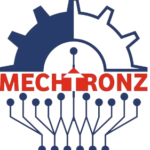Introduction to Commercial HVAC Systems
Commercial HVAC systems are essential for maintaining a comfortable and healthy indoor environment in offices, malls, factories, and other large buildings. Unlike residential systems, these are more complex and powerful. Let’s explore the main components that make them work efficiently.
Why Understanding HVAC Components Matters
Knowing the core parts of your HVAC system helps with:
- Troubleshooting issues
- Reducing energy costs
- Planning maintenance
- Extending system life
Major Components of a Commercial HVAC System
1. Air Handling Unit (AHU)
The AHU is the heart of ventilation. It includes:
- Blower/fan to move air
- Filters to clean incoming air
- Cooling/heating coils to condition the air
- Dampers to control airflow
2. Chiller
Used for cooling large spaces, chillers remove heat from water that’s circulated through cooling coils in the AHU.
Types of Chillers
Air-cooled chillers (used outdoors)
Water-cooled chillers (used indoors, needs cooling tower)
3. Boiler
Boilers provide hot water or steam for heating. They’re commonly found in colder climates.
4. Cooling Tower
Cooling towers release heat absorbed by the chiller. They’re large, often placed on rooftops.
5. Ductwork and Vents
These carry conditioned air throughout the building and return stale air to the AHU.
Duct Design Considerations
Insulation to prevent energy loss
Zoning to serve different areas efficiently
6. Thermostat and Control Systems
These manage the indoor temperature and system operation. Modern systems include Building Management Systems (BMS) for automation and energy efficiency.
Additional Supporting Components
7. VAV Boxes (Variable Air Volume)
They regulate airflow to different zones, helping maintain consistent comfort levels.
8. Exhaust Systems
Remove stale or contaminated air, especially in kitchens, restrooms, or industrial areas.
Maintenance and Energy Efficiency
Regular Inspections
Scheduled maintenance helps spot issues early, reducing downtime and extending equipment life.
Monthly Tasks
Filter checks
System pressure readings
Thermostat testing
Annual Tasks
Deep cleaning coils
Inspecting insulation
Checking refrigerant levels
Bonus Tip: Use Smart Sensors
Smart sensors can adjust HVAC output based on real-time occupancy, cutting energy costs significantly.
Conclusion
Understanding the components of a commercial HVAC system empowers you to manage it better, reduce costs, and ensure comfort. Whether you’re a facility manager or a curious business owner, knowing what’s behind the vents can go a long way.


https://shorturl.fm/m8ueY
https://shorturl.fm/9fnIC
https://shorturl.fm/5JO3e
https://shorturl.fm/a0B2m
https://shorturl.fm/FIJkD
https://shorturl.fm/FIJkD
https://shorturl.fm/oYjg5
https://shorturl.fm/FIJkD
https://shorturl.fm/bODKa
https://shorturl.fm/FIJkD
https://shorturl.fm/TbTre
https://shorturl.fm/bODKa
https://shorturl.fm/bODKa
https://shorturl.fm/68Y8V
https://shorturl.fm/XIZGD
https://shorturl.fm/TDuGJ
https://shorturl.fm/JtG9d
https://shorturl.fm/nqe5E
https://shorturl.fm/nqe5E
https://shorturl.fm/0EtO1
https://shorturl.fm/0EtO1
https://shorturl.fm/YZRz9
https://shorturl.fm/uyMvT